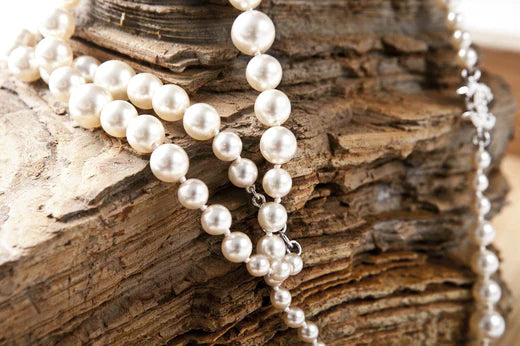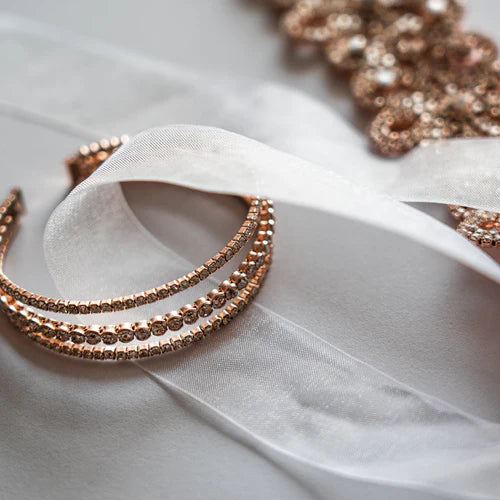About Pearls

A pearl is a gemstone, but unlike others, it is formed within a living creature – certain species of oysters and mussels. Natural pearls are formed when a sand or fishbone enters the body of an oyster. This causes irritation inside its body and to get rid of this irritation the oyster secrets layers and layers of nacre over the irritant which over a period of time forms into a pearl.

Types of Pearls
Pearls are broadly classified as natural and cultured pearls. Natural or wild pearls are found by chance by shellfish harvesters. There is no human intervention involved. However, finding a pearl through this process is an extreme rarity, due to which they are sold at a higher price point.
Cultured pearls are produced in a pearl farm with human intervention. Here, an irritant is inserted into the molluscs’ shell. A majority of pearls found in marketplaces today are cultured. Cultured pearls are further divided into:
Akoya Pearls – Akoya pearls have grown off the Japanese coast for the past 100 years. When you imagine the classic strand of round white pearls, you’re thinking of Akoya pearls as they are known for their perfectly round shape and reflective lustre.
Freshwater Pearls – These are the most affordable pearls and are the perfect choice for fashion-conscious women. They are famous for their baroque shapes and a wide range of pastel colours. They also have a softer lustre than Akoya pearls.
Tahitian Pearls – They are naturally occurring black pearls but can also be found in green, blue and grey. They’re typically found in French Polynesia. Round Tahitian pearls are quite rare and are most commonly seen as drops and ovals.
South Sea Pearls – These pearls are known as the Rolls-Royce of Pearls as they are the largest seawater pearls grown today. They are found in Indonesia, Philippines and Australia with colours ranging from white to gold. Their enormity in size makes them quite rare, but perfect for a statement necklace.

Difference Between Real and Fake Pearls
Here are some easy ways to distinguish real pearls from fake ones:
- When viewed under a magnifying glass, you will be able to spot surface ridges similar to sand dunes on real pearls. Counterfeit pearls will either look smooth or have bubbles.
- Real pearls will have an enriched body colour with overtones of other shades. Fake pearls will look white and flat.
- Real pearls are cold to the touch. You won’t feel the same coldness while handling fake pearls.
- If you were to rub real pearls across your teeth, they will feel gritty, while fake ones would feel smooth.
- Real pearls will appear smooth around holes drilled into them. Fake pearls will show bumps or some roughness.



